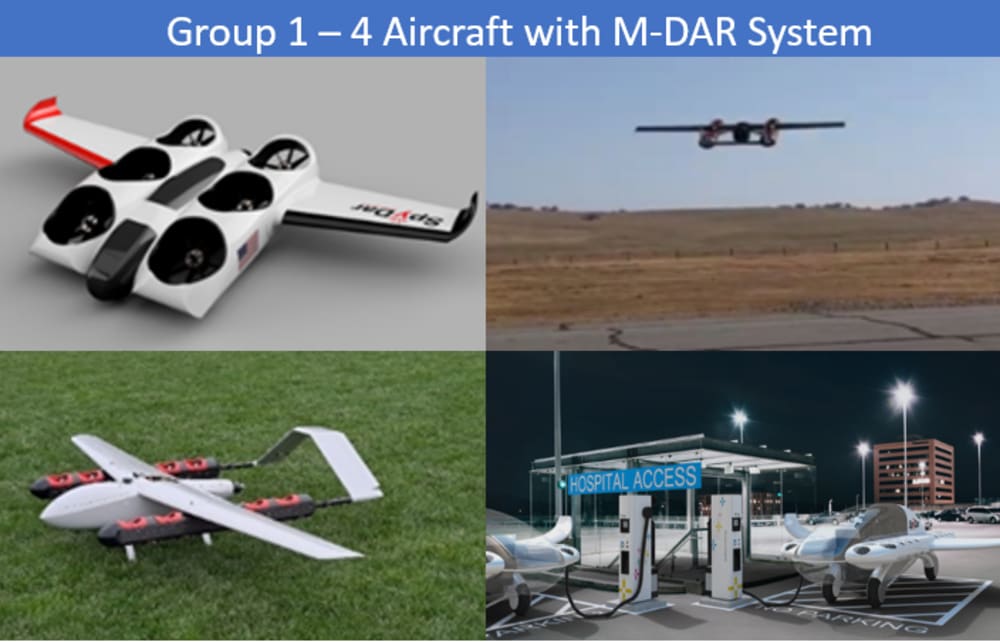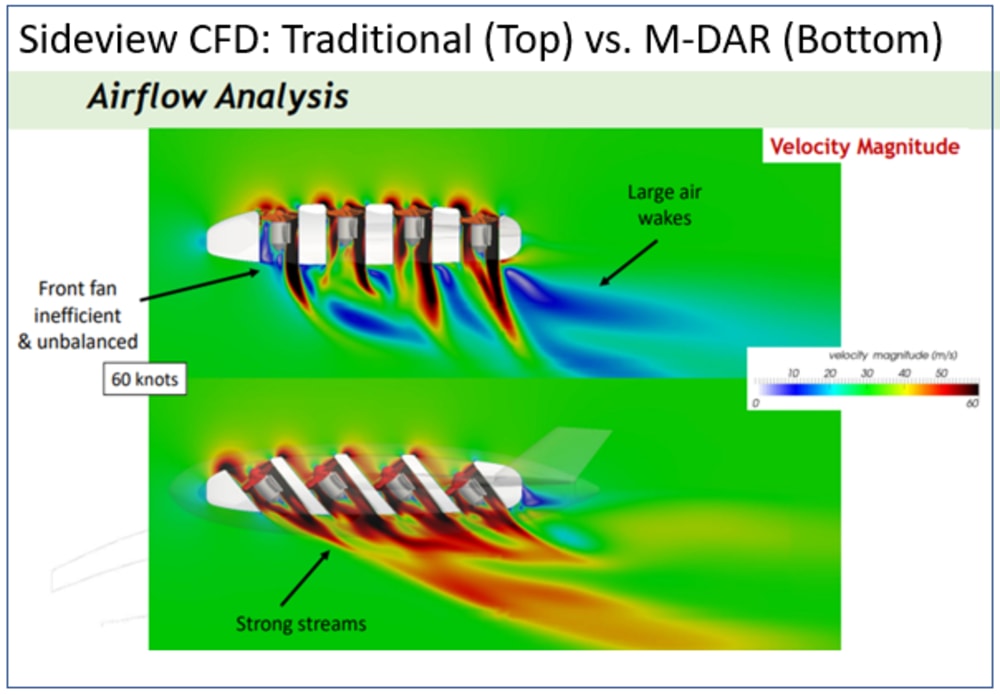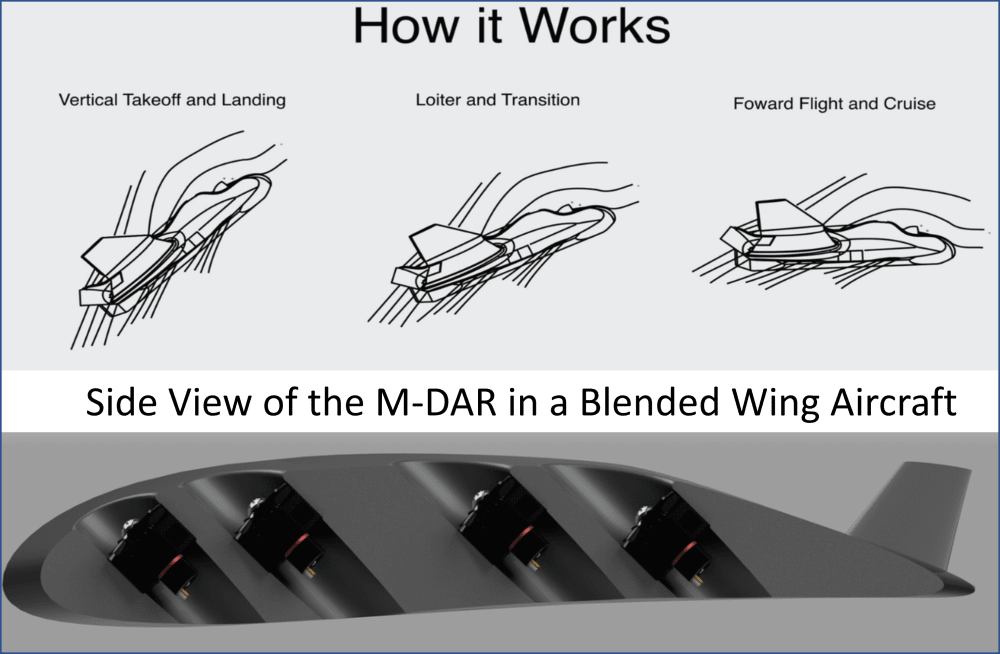

Traditional planar ducted fans can suffer from stall and drag in edgewise flight due to the high angle of attack at which air must turn into the rotors. This creates blade imbalance and instability in the aircraft that rely upon such fixed fan-in-wing designs. Solutions to solve the stall problem of ducted fans in edgewise flight have been sought for decades and is an active area of research. The Multi-Ducted Angled Rotor (M-DAR) solves stall and high momentum drag of traditional planar (90 degree) ducted fans in forward flight by lowering the angle at which the air flows into the duct. The M-DAR itself is comprised of fixed forward pitched ducted fans set at a 45-degree angle. This allows the M-DAR to function at higher transition speeds to enable efficient wing borne flight.
State of the art tilt-rotor aircraft such as the V-22 must rotate large heavy mechanical engines and their blades 90 degrees when transitioning. For tiltrotors this is an intensive and complex mechanical and aerodynamic process enacted within a very narrow flight envelope. Tilt-rotors also suffer from downwash onto their wings. In comparison, M-DAR aircraft can take-off, transition, and land by differential thrust of the fans. In other words, a drone or aircraft that uses the M-DAR propulsion system can accomplish this task as fast as the flight control computer provides the command. In addition, there are no heavy or complex actuators or control surfaces needed in an M-DAR aircraft. This makes M-DAR aircraft lighter, more survivable, and easier to learn than either helicopter or tilt-rotor designs.
The M-DAR is scalable. SpyDar has successfully developed and flown Group 1-3 prototypes in field environments. SpyDar is focused on larger 2 passenger eVTOL design called the M-Star. We see medical professionals are a highly valued public good. The time and cost to train such individuals devoted directly to the health of others is of significant worth to society. As such their time may be considered a limited resource. This is particularly noticeable in rural areas as more medical care facilities aggregate into urban centers. This trend moves patient care further away from rural and underserved communities and thereby decreases access and response time. SpyDar posits four use cases for the M-Star as a medical commuter transport support Critical Access Hospitals.
Surgical services are extremely valuable for CAHs. Rural hospitals are aware of the profitability of surgeries but have difficulty recruiting surgeons due to a lack of surgical workforce in rural areas. CAHs often resort to the use of locum tenens surgeons when unable to find local surgeons, which may lead to worse outcomes. A CAH that owned an M-Star could bring in either hospital based or locum tenens surgeons to augment their surgical capabilities. The study found that for each surgical service offered the annual net increase was $630,528 to the CAH. This is well above the anticipated per unit cost of the M-Star ($350,000) and annual sustainment and operating cost ($30,000).
Video
-
Awards
-
 2022 Aerospace & Defense Honorable Mention
2022 Aerospace & Defense Honorable Mention -
 2022 Top 100 Entries
2022 Top 100 Entries
Like this entry?
-
About the Entrant
- Name:Liza Pierce
- Type of entry:teamTeam members:Liza Pierce, Stuart Dana, Thomas Johnson
- Software used for this entry:Fusion 360
- Patent status:patented








